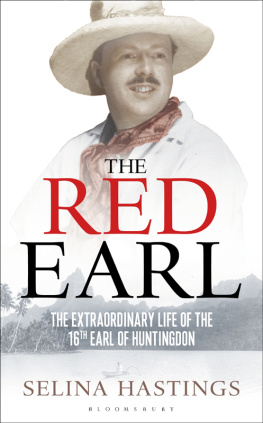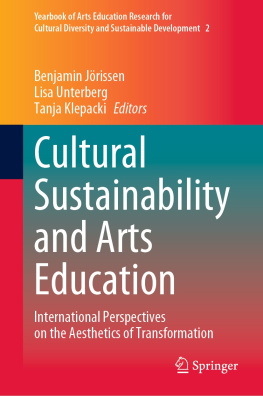Annual Review of Cultural Heritage Informatics
Annual Review of Cultural Heritage Informatics
2014
Edited by Samantha K. Hastings
ROWMAN & LITTLEFIELD
Lanham Boulder New York London
Published by Rowman & Littlefield
A wholly owned subsidiary of The Rowman & Littlefield Publishing Group, Inc.
4501 Forbes Boulevard, Suite 200, Lanham, Maryland 20706
www.rowman.com
Unit A, Whitacre Mews, 26-34 Stannary Street, London SE11 4AB
Copyright 2015 by Rowman & Littlefield
All rights reserved . No part of this book may be reproduced in any form or by any electronic or mechanical means, including information storage and retrieval systems, without written permission from the publisher, except by a reviewer who may quote passages in a review.
British Library Cataloguing in Publication Information Available
Library of Congress Cataloging-in-Publication Data Available
978-1-4422-5011-6 (cloth)
978-1-4422-5012-3 (electronic)
 The paper used in this publication meets the minimum requirements of American National Standard for Information SciencesPermanence of Paper for Printed Library Materials, ANSI/NISO Z39.48-1992.
The paper used in this publication meets the minimum requirements of American National Standard for Information SciencesPermanence of Paper for Printed Library Materials, ANSI/NISO Z39.48-1992.
Printed in the United States of America
ARCHI Editorial Board
Jennifer Arns, PhD
Associate Professor
School of Library and Information Science
University of South Carolina
Davis 202
Columbia, SC 29208
David Carr, PhD
Conversations in Cultural Institutions
980 Lost Forest Drive NW
Sandy Springs, GA 30328
Mary W. Elings
Archivist for Digital Collections
The Bancroft Library
University of California
Berkeley, CA 94720-6000
Jana Hill, MLIS
Collection Information and Imaging Manager
Amon Carter Museum of American Art
3501 Camp Bowie Boulevard
Fort Worth, TX 76107
www.cartermuseum.org
Elise Lewis, PhD
Assistant Professor
School of Library and Information Science
University of South Carolina
Davis 212
Columbia, SC 29208
Paul F. Marty, PhD
Associate Professor
School of Library and Information Studies
142 Collegiate Loop
Florida State University
Tallahassee, FL 32306
Karen Miller, MLIS, JD
PhD Candidate
School of Library and Information Science
University of South Carolina
Davis 212
Columbia, SC 29208
Jane Przybysz, PhD
Executive Director
McKissick Museum
College of Arts and Sciences
816 Bull Street
Columbia, SC 29208
Abebe Rorissa, PhD
Associate Professor
Department of Information Studies
College of Computing and Information
University at Albany, State University of New York
Draper Hall, Room 116
135 Western Avenue
Albany, NY 12222
Colin F. Wilder, PhD
Associate Director
Center for Digital Humanities
Thomas Cooper Library
University of South Carolina
Columbia, SC 29208
Greg Wilsbacher, PhD
Curator, Newsfilm Collections
Moving Image Research Collections
University of South Carolina
Columbia, SC 29208
I
BEST PRACTICES
Perspectives on Museum Informatics
Curatorial Voice Reimagined through Gatekeeper Theory; Museum as Place Reenvisioned through Nonakas SECI ba
Laura-Edythe S. Coleman
Abstract
The emerging field of museum informatics is more than just an interdisciplinary dialogue with information professionals. The shift of museum missionsfrom object-oriented to story-oriented approaches, from expert-curated to community-curated exhibits, and from object preservation to promotion of social agendasdemands the skills of information professionals. Recognizing the changing role of museums from information preservation to information provision, information scientists are challenged to study the unique information needs of museum professionals and museum audiences. This chapter attempts to answer that challenge by applying vetted theories from the field of information science to the realm of museums and reimagining two concepts central to museology through the lenses of information science. First, the ubiquitous curatorial voice of a museum exhibit is recast as a gatekeeper, granting the researcher the ability to apply principles of gatekeeper theory to this often invisible but always audible voice within an exhibit. Second, the pervasive quandary of museum as place , or space, is reenvisioned through Nonakas SECI model as ba , the shared context for knowledge creation (Nonaka, Toyama, & Konno, 2000, p. 5). Information science research into curatorial voice and museum as place may shed light on these widely accepted and barely understood phenomena, discerning pathways for museums to facilitate their role in society, even as that role shifts.
Introduction
At first glance, the emerging field of museum informatics appears to be little more than an effort to bring together information professionals and museum professionals for the purpose of interdisciplinary dialogue. Yet museum informatics is more than an interdisciplinary dialogue. Museum informatics represents the presence of information science in a museum environment. Paul Marty (2009) defines museum informatics as the study of the sociotechnical interactions that take place at the intersection of people, information, and technology in museums (p. 3). The importance of museum informatics cannot be underestimated as museum missions shift from object-oriented to story-oriented approaches, from expert-curated to community-curated exhibits, and from object preservation to promotion of social agendas (Chen, 2007). These shifts demand both the skills of information professionals and the recognition of the changing role of museums from information preservation to information provision. Marty speaks to this shift: Information professionals are not the only ones aware of the growing convergence of cultural heritage organizations in the information age. As users rely increasingly on online information, they will likely expect to find similar types of resources offered by different institutions (Marty, 2007, p. 104). Pressures from within and without the museum necessitate a call to arms for information scientists to study the unique information needs of museum professionals and museum audiences (p. 105). This chapter attempts to answer that call, applying vetted theories from the field of information science to the realm of museums.
In this chapter, two concepts central to museology are reimagined through the lenses of information science. First, the ubiquitous curatorial voice of a museum exhibit is recast as a gatekeeper, granting the researcher the ability to apply principles of gatekeeper theory to this often invisible but always audible voice within an exhibit. Second, the pervasive quandary of museum as place , or space, is reenvisioned through Nonakas SECI model as ba , the shared context for knowledge creation (Nonaka, Toyama, & Konno, 2000, p. 5). Information science research into curatorial voice and museum as place may shed light on these widely accepted and barely understood phenomena.
Curatorial Voice
The question arises: What is curatorial voice ? Peter Walsh (1997) describes curatorial voice as the Unassailable Voice: an essential part of the museum experience. It is an institutional tone and attitude that pervades museum labels, brochures, exhibitions, catalogues, audio-visual presentations, and now Web sites (Walsh, 1997). For the museum visitor, curatorial voice is interwoven into the museum experience, providing organization, authority, and authenticity to the gestalt (Falk & Dierking, 1992). To the museum visitor, Walsh likened the sound of curatorial voice to the mythical disembodied voice of the Wizard of Oz (Walsh, 1997). How can research investigate curatorial voice? Perhaps the taxonomic model of gatekeeper may reveal a more tangible force or embodiment for curatorial voice.
Next page












 The paper used in this publication meets the minimum requirements of American National Standard for Information SciencesPermanence of Paper for Printed Library Materials, ANSI/NISO Z39.48-1992.
The paper used in this publication meets the minimum requirements of American National Standard for Information SciencesPermanence of Paper for Printed Library Materials, ANSI/NISO Z39.48-1992.